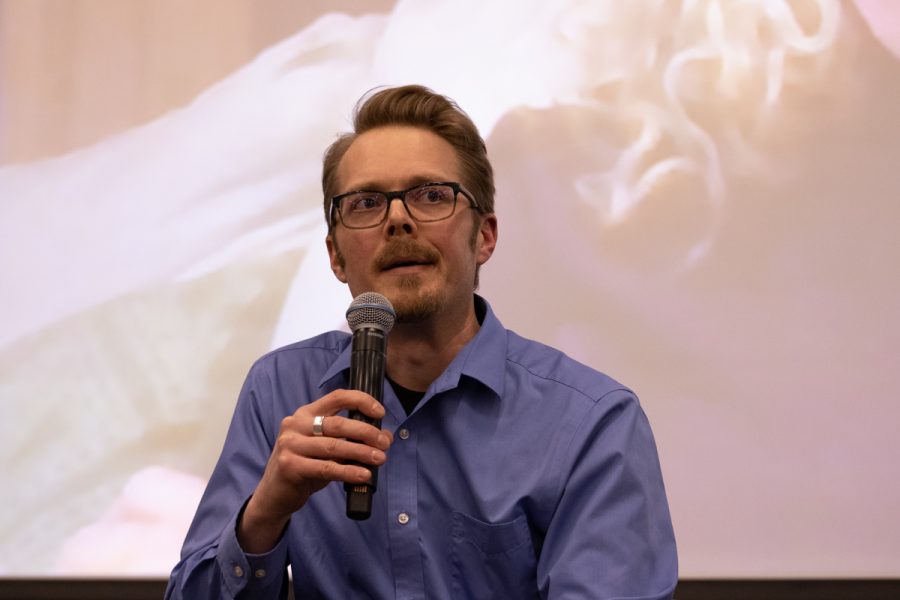Remembering Winona’s Native roots
Dr. Adam Gaffy, the Winona State University professor who organized the Remembering Wenonah panel. This event focused on how the city of Winona is tied strongly to Native American culture.
April 2, 2023
To the Dakota and other Indigenous people, the name “Winona” has a deep and complicated meaning.
Iyekiyapiwin Darlene St. Clair, a Dakota woman, spoke at the “Remembering Wenonah” event panel held on March 30. In her speech, St. Clair explained that in the Dakota language, Winona, or “Winunna”, means first born daughter.
Being the first born daughter carries its own roles and responsibilities. According to the Dakota, oldest daughters are seen as second mothers and protectors, not unlike many families today.
St. Clair also brought attention to how many native names and terms have been converted and mispronounced to become names of cities, such as “Sakpe” becoming Shakopee.
The Remembering Wenonah panel, organized by Winona State University professor Adam Gaffey, focused on how the city of Winona is tied strongly to Native American culture.
Monica De Grazia, a presenter at the panel, described the legend surrounding Winona’s namesake and the statue located in Windom Park.
All Winona locals know the tale of Princess Wenonah. Visitors can read the plaque underneath her statue if they are unfamiliar with the legend.
However, this story has been romanticized and twisted by modern morals and values.
“It is not a story grounded in historical fact,” Grazia said. The story of Princess Wenonah, while based on real people and events, is merely a reflection of false stereotypes against Native people.
Jill Ahlberg Yohe, a speaker and curator, explained how statues erected in the image of Native people are often created for economic gain rather than respect and appreciation.
“They enable certain perspectives that are woven into our systems,” Gaffey said.
Gaffey spoke further on how Princess Wenonah’s statue creates divided focus. Viewers cannot separate her suicide from the site dedication itself.
Other statues, like Wenonah’s, are more representative of settler design than Indigenous culture. Many of these monuments are created by white sculptors who create their idea of a Native person and dedicate it to their own spouses and families, rather than the people the statue is meant to represent.
It is important that the history of Winona and its connections to Indigenous people be represented and acknowledged.
“Are there opportunities for Winona to live into its namesake?” St. Clair said.
St. Clair reminds us of the true meaning of the name “Winunna” is someone who takes responsibility while leading and caring for those who come after her.
It is up to the people of Winona to honor and carry on the legacy that this name holds for themselves as well as the Dakota people.















































